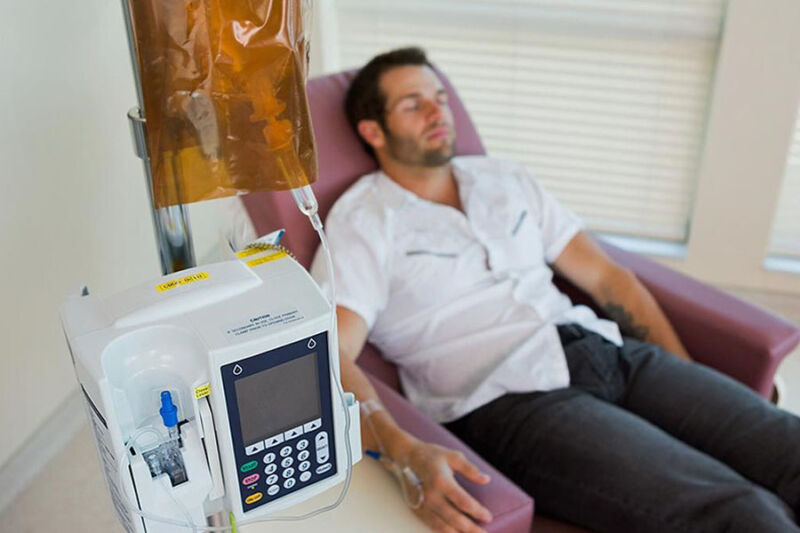The medical community currently has mixed opinions regarding the use of ketamine for pain management. While some evidence shows it reduces pain scores for postoperative patients and terminally ill cancer patients, there are growing concerns over patients abusing ketamine and its long-term side effects. This guide reviews what ketamine is used for and when doctors use it.

What Is Ketamine?
Ketamine is a common anesthetic medication doctors use during surgery to make patients fall asleep and lose memory of the procedure. It’s also an analgesic, which can numb the skin or muscle tissue when used topically or injected beneath the skin. Ketamine has been around for a long time, but most people only know of it as a street drug.
In recent years, scientists have been exploring new potential uses for the drug, including low-dose ketamine infusions for chronic pain relief. Due to concerns over drug abuse and the effects of ketamine on those who use it improperly, doctors only prescribe it when another pain medicine is ineffective.
Ketamine for Pain Management
Ketamine treatment therapy can relieve acute postoperative pain during a patient’s recovery, but doctors are using intravenous ketamine for chronic postoperative pain, refractory cancer pain and long-term pain relief when patients report their opioid medications aren’t helping. Injections and intravenous infusions are more useful than oral ketamine administration, but some patients may be prescribed pills if the doctor feels it’s appropriate.
Another potential use of ketamine is to treat complex regional pain syndrome, because the medication’s analgesic effects are most pronounced when treating pain connected to spinal nerves.
Ketamine Doesn’t Offer Pain Relief for All Chronic Pain Patients
Doctors are cautious when using ketamine because it’s not always effective and comes with risks. Its sedative qualities and impact on memory make it a great option for treating acute and chronic pain when working with surgical patients, but its long-term impacts can create other health complications. One of the greatest concerns is drug-induced liver injury.
Chronic ketamine abusers might need a higher ketamine dose over time to feel the same effects. Chronic abuse only increases the risk of kidney and liver damage when taking ketamine, so doctors may choose an alternative for postoperative pain relief if their patients have a history of substance abuse.

When Do Doctors Prescribe Ketamine?
Some reasons a doctor may use ketamine for pain include:
- The treatment of neuropathic cancer pain
- Complex chronic pain problems affecting the brain and spinal cord
- To decrease postoperative nausea and improve postoperative pain relief
- To manage blood pressure when a patient suffers from pain-developed uncontrolled hypertension
- Combining ketamine treatment with other medications for major depressive disorder, anxiety or treatment-resistant depression
- The analgesic effect of a subcutaneous ketamine infusion on chronic muscle pain
- The treatment of opioid-induced hyperalgesia
- Chronic neuropathic pain in patients with type II diabetes
Treatment regimens differ widely, and doses are determined by milligrams per kilogram of a person’s body weight. A patient’s weight, age, metabolic conditions and other health factors are all considered before a doctor determines what type of treatment is best and how much medication to administer. Some patients may be able to manage their pain through oral ketamine analgesia, while others need to visit the doctor’s office for an infusion. Infusions can take several hours if they’re administered intravenously.
When to Seek Help
Doctors are limited when considering pain management options that aren’t addictive. Typical medications for chronic pain are opioids such as Vicodin, OxyContin, morphine and Fentanyl. Doctors need to weigh the risk of substance abuse with the relief their patients need from severe pain. Ketamine is one of the alternatives more doctors are turning to in the wake of the opioid crisis.
If you’re prescribed ketamine for pain treatment, it’s possible to develop a dependence on the medication. Some of the symptoms of an addiction to medication include:
- Needing greater doses to achieve the same level of pain reduction
- Feeling anxious or worried between doses or feeling a strong need to take the drug
- Seeking street versions of the medication because you’re unable to have it prescribed
- Retreating from friends, family members and activities you enjoyed
- Experiencing withdrawal symptoms when not using the medication
Camelback Recovery can help. If you’re experiencing dependency on your pain medication, we can help you learn ways to manage your pain without powerful pain medications so you can take control of your life. Contact us today at 602-466-9880 to learn about the treatment options in our prescription drug rehab in Phoenix, AZ.





